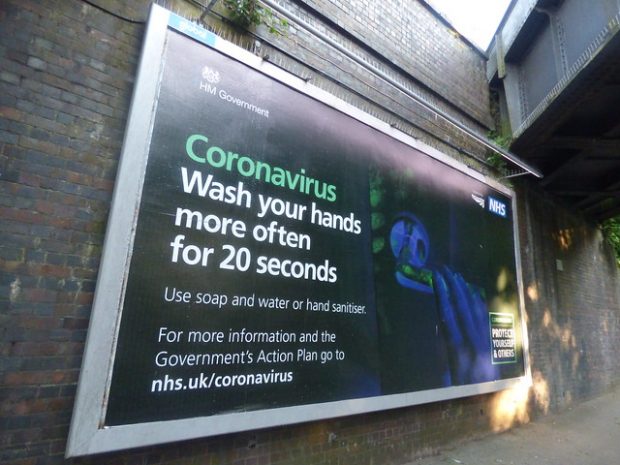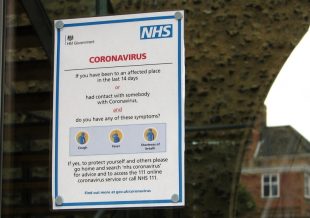
Maps and data visualisations turn up throughout our daily lives and often appear in the news. They act as an important tool, allowing us to locate, track, monitor, plan, intervene and horizon scan. From the local level, to the global level, they have long been used as a way to help the public understand complex information.
The COVID-19 situation we face today is a complex one. It involves transmission through human contact and also interactions of environment and the ecosystem. This shows us how both human and physical elements of geography are vital to our understanding of epidemiology (the study of how diseases occur).
The limitless nature of travel that is a product of our growing interconnectedness has changed how the world operates, and is especially prominent when understanding the spread of 21st century disease like COVID-19. The world is composed of complex physical and built environments, and the diversification of social interactions, economic inputs and demographic shifts is having a profound impact. From growing megacity economies, to climate refugees, these and other 21st century phenomena will be impacted greatly by COVID-19.
A geographic perspective is a way to understand a topic or area using spatial features and relationships. Geography is the study of places and the relationships between people and their environments. Both approaches are key to allowing us to locate, track, monitor, plan, intervene for COVID-19 and horizon scan future planning. A number of departments across government have been doing just this, showing how the essence of geography and geographical skills can benefit responses to COVID-19.
Geographers across government have been busy...
Welsh Government
The Welsh Government is using Ordnance Survey addresses and Unique Property Reference Number (UPRN) to provide routes to the nearest key service on public and private transport networks. By doing this, the Welsh Government has been able to match these addresses to adult care homes and calculated the travel times for staff to key services, such as supermarkets and pharmacies. In addition to supporting ‘at risk’ groups, the Welsh Government has helped support those most vulnerable to COVID-19, those of which have received a letter from the Chief Medical Officer asking them to shield themselves and ensure a package of support is available for those who need it. Key to the effective rollout of this has been the sharing of complex data sets with local authorities, supported by GeoPlace.
HM Courts and Tribunals Service
HM Courts and Tribunals Service (HMCTS) used available Public Health England (PHE) data from ArcGIS Online and overlaid departmental data such as:
- Staff in vulnerable age bands at court locations
- Caseload and hub court locations for trials to be held via video (where possible)
- Staff absences due to the pandemic (caring duties, self-isolation, positive COVID-19 diagnoses)
HMCTS are using these outputs to report information to seniors using ArcGIS Online and Power BI (via the ArcGIS Maps for Power BI connector).
This is a great example of how concrete geospatial/geographical skills are being used to combat COVID-19 to inform a specific part of government policy.
Ministry of Housing Communities and Local Government
The Ministry of Housing, Communities and Local Government (MHCLG) are using geospatial data as part of their resilience work, to show how each Local Resilience Forum is performing/coping through the situation.
They are also using high risk patient numbers to identify where they are in the country to help deliver support packages across the country.
The specific support provided to Local Resilience included, at the time of writing:
- Data and maps for strategic decision support (e.g. people aged over 70 and field hospitals)
- Locations of hospitals, mortuaries, local food distribution hubs and
food banks - Data matching and map creation for locations of Local Authority district hubs
- Mapping of distribution depots for use by volunteers and Ministry of Defence, identifying car parks that can be used as sites for mobile phlebotomy units
- Identifying and locating shops that are permitted to remain open
- Re-supply of OS Data due to inaccessibility of customer site and resources
Local government:
Central and devolved governments are including Unique Property Reference Numbers (UPRN) in the data sent to local governments to support shielding measures for vulnerable people to COVID-19. There are many positives to utilising UPRNs:
- They enable segmentation and targeting of support
- Local government can see deprivation inequalities between areas and how this informs access to services
- They enable data to be mapped and analysed spatially to look for trends.
Similar to Welsh government utilising UPRNs to identify at risk groups and distance to services, various local authorities are also utilising this geographical ability. The Hackney Council ‘HackIT’ team, for example, are using UPRNs to help understand which businesses and members of the community are most vulnerable to health and economic impacts of COVID-19.
Bradford NHS have been creating a series of dashboards for clinicians and researchers to investigate factors for the most at-risk areas with the highest number of COVID-19 cases. By taking adult social care data, they are able to make these connections through UPRNs. Having patient data to place on a map is one thing, but being able to link this to UPRNs and refine this work is seen as the “holy grail” and the necessary step forward.
As stated by Local Government Association: "Crucial data must be shared with councils to make use of their local knowledge and expertise and ensure vital national efforts to track and trace coronavirus success".

Where next?
Many initiatives across government are harnessing the power of geographical skills to facilitate COVID-19 responses. There is the potential to underpin other activities across government to ensure geography is being considered within other professions.
From ensuring geography is a layer underneath different policy questions, to utilising OS data to support decisions using the best data possible, there is an increasing potential for the geographical perspective to diversify public sector responses to urgent issues like COVID-19.
The current pandemic has debilitated lives and affected all sectors of society, but there can be no doubt that it has increased the efficacy of public sector data sharing, further cementing the necessity for these core skills. Geospatial skills and the broader field of data discoverability have had to be transformed and harnessed in order to provide an effective response to COVID-19.
Leave a comment